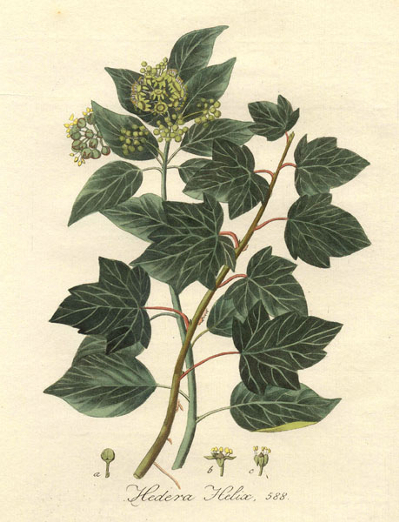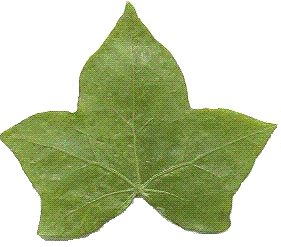Rock Ivy
Rock Ivy is a most appropriate plant badge for the Gordons. It is well known for its ability to overwhelm anything and everything around it. In the Celtic calendar it was the sacred wood of the 11th month (Sept 30th – Oct 27th) and interestingly the Ogham assigned as its code was Gort, the letter “G.”

Ivy grows along the ground, up trees, walls, rocks and can overcome any obstacle in its growth path. Valued anciently for its tenacity, it is a symbol of strength and determination. Due to its virtual indestructibility being able to recoup from even the worst damage and quickly regrow from just a small root piece. The roots were considered ancient and its vibrant evergreen leaves indicated its everlasting nature. The five points on the lower leaves signifying unity of the elements with one bonding energy… a strong symbol of protection.
Its propensity to interweave in its growth and connect the ground, the rocks, and the trees spiraling up to the open sky, came to symbolize the stubborn and enduring connection of friends and family, and also of an implacable enemy able to strangle out even the mightiest of trees. It became known as a plant of death, rebirth, fertility, good luck, connection and protection.
All of these attributes accurately portray those of the Gordon Clan! What better plant to choose for our plant badge.
Rocky Ivy Characteristics
Rock Ivy (hedera helix) is an evergreen climbing plant. Growing to 20 – 30 m (66 – 98 ft) high where suitable surfaces (trees, cliffs, walls) are available, and also growing as ground cover where there are no vertical surfaces. It climbs by means of aerial rootlets with matted pads which cling strongly to the substrate.

The leaves are alternate, 50 – 100 mm long, with a 15 – 20 mm petiole. They are of two types: with palmately five-lobed juvenile leaves on creeping and climbing stems, and unlobed cordate adult leaves on fertile flowering stems exposed to full sun, usually high in the crowns of trees or the top of rock faces.
The flowers are produced from late summer until late autumn. Individually small, in 3–5 cm diameter umbels, greenish-yellow, and very rich in nectar. They are an important late autumn food source for bees and other insects.
The fruit are purple-black to orange-yellow berries 6 – 8 mm diameter. They ripen in late winter and are an important food for many birds, though somewhat poisonous to humans. There are one to five seeds in each berry. Birds disperse the seeds when eating the berries.